Styling Museum Mannequins
Today's post is courtesy of Associate Curator Christina Johnson. Using a bright pink Stephen Sprouse ensemble as an example, Christina describes how we bring garments to life with research, mannequins, accessories, and styling. Thanks to Christina for documenting this process!
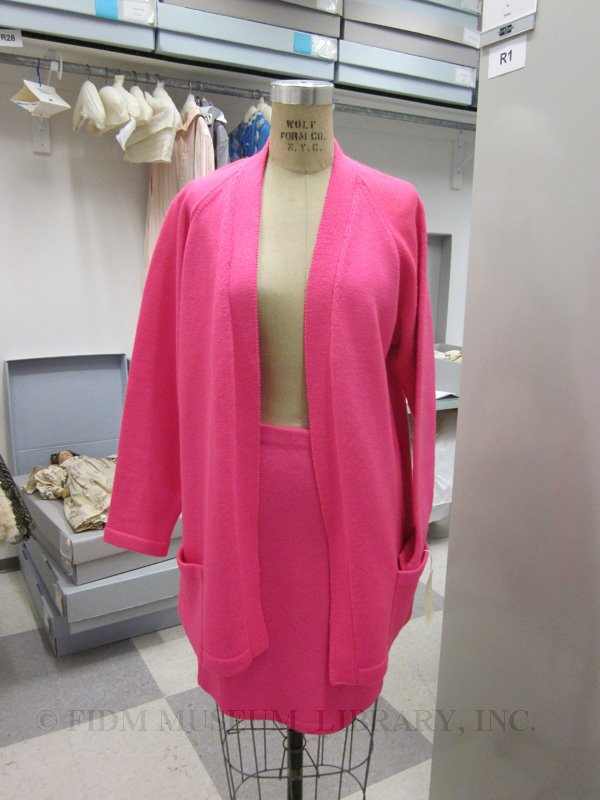
Stephen Sprouse
Spring/Summer 1984
Gift of Deborah Landis
2000.435.1A-C
This hot pink knit sweater and skirt doesn’t really look like much draped on a dressmaking form. True, the bright pink is exciting, but doesn’t the ensemble look sloppy, even dowdy in silhouette? It’s difficult to date the garments, or really understand their context as seen here. Yes, it would probably help if our dress form wasn’t missing its own arms! It would also help if the ensemble was accessorized with its matching tights and belt. This image is a quick reference photograph, shot for curatorial research purposes, so it really shouldn’t be compared with garments as dressed for exhibition. It represents an ensemble before styling. What goes into styling mannequins for exhibition? I think the steps generally boil down to: vision, research & collaboration.
This ensemble was designed by Stephen Sprouse and chosen for inclusion in Modern Love: Fashion Visionaries from the FIDM Museum LA, currently on view at the Bendigo Art Gallery (BAG) in Australia. The exhibition includes many of the most seminal fashion designers of the past few decades. As referenced in the exhibition title, “Visionaries” refers to designers who see beyond trends, people who have the innate ability to distill contemporary cultural moments into clothing. Their visual vocabulary comes through loud and clear even decades later. Sprouse became known for his mix of 70s punk (graffiti motifs and spikes) paired with a 1980s aesthetic (neon colors and body-baring clothes).
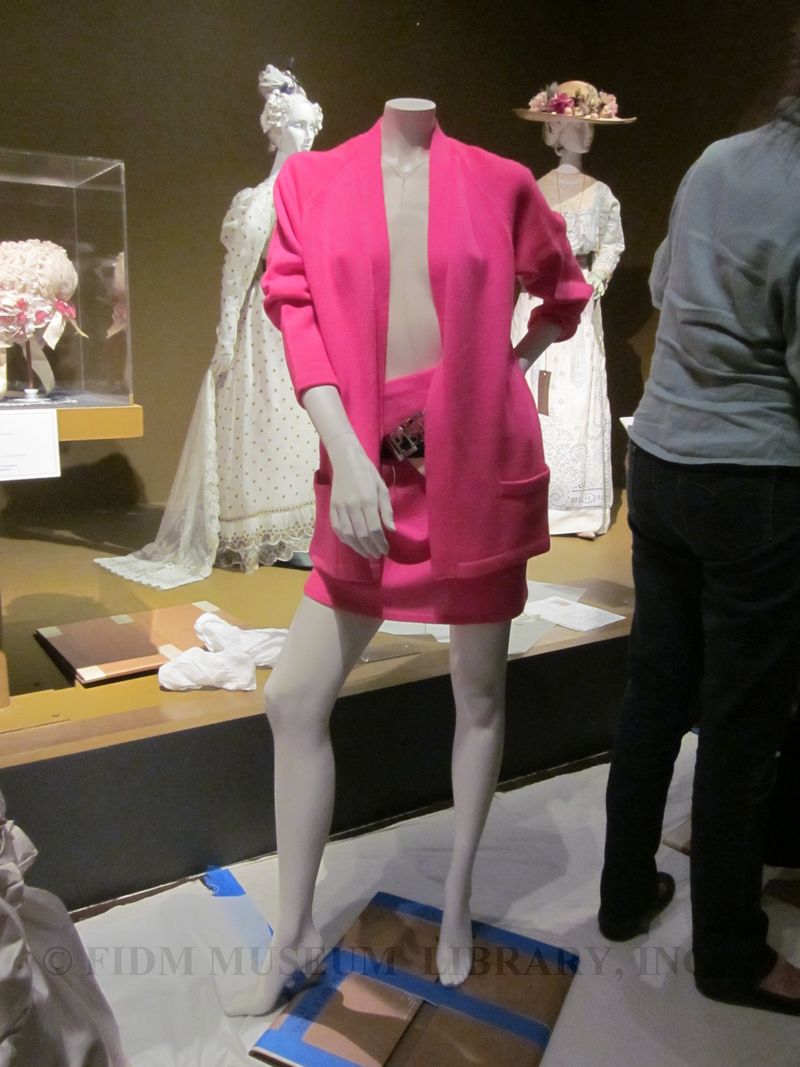 Sprouse's ensemble looks more alive on this mannequin than it did on the armless dress form.
Sprouse's ensemble looks more alive on this mannequin than it did on the armless dress form.
BAG requested matte white headless body mannequins. We chose mannequins specifically for each different ensemble, with the vision of presenting the garments clearly and with the correct “attitude”—the ideal stance as posed by designers’ muses and models. This mannequin (above) was not the one we ultimately chose, but you can see how the garments are beginning to take on more dynamism on a body with musculature and personality.
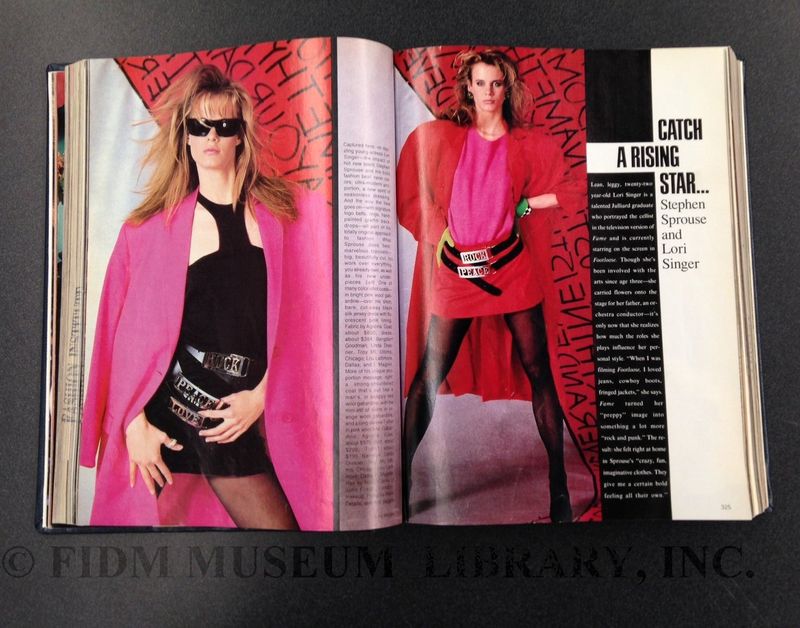 Vogue editorial featuring a similar Stephen Sprouse ensemble
Vogue editorial featuring a similar Stephen Sprouse ensemble
I find the research portion of museum work fun. Condé Nast has recently digitized Vogue, and it was easy to find this look’s date with a simple keyword search. A similar ensemble appears in the April 1, 1984 edition. Actress Lori Singer, who models it in Vogue, is quoted as saying his “crazy,” bright clothes “…give me a certain bold feeling all their own.” Her belts slung low around the waist inspired us to style our mannequin in the same way.
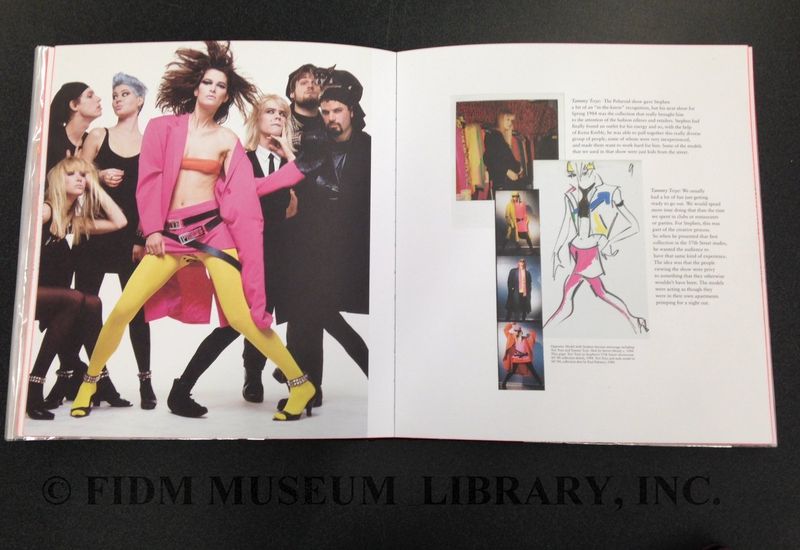 A similar ensemble in The Stephen Sprouse Book by Roger and Mauricio Padilha
A similar ensemble in The Stephen Sprouse Book by Roger and Mauricio Padilha
Sprouse was the subject of a monograph written by Roger and Mauricio Padilha in 2009, and this book helped my research a great deal. One image shows a model in the neon pink miniskirt and similar coat. She also wears the same low-slung belts. And that very brief tube top! Although it was donated with the matching tights and a belt, our ensemble does not include an original top. So we created a prop, an object meant to convey the appearance of an original. Both models photographed have wide-legged, hip-thrust stances conveying a certain energetic, aggressive quality. We chose a mannequin with the same look, and bunched the skirt a bit to convey a punkish chic, which Sprouse was known for in his designs.
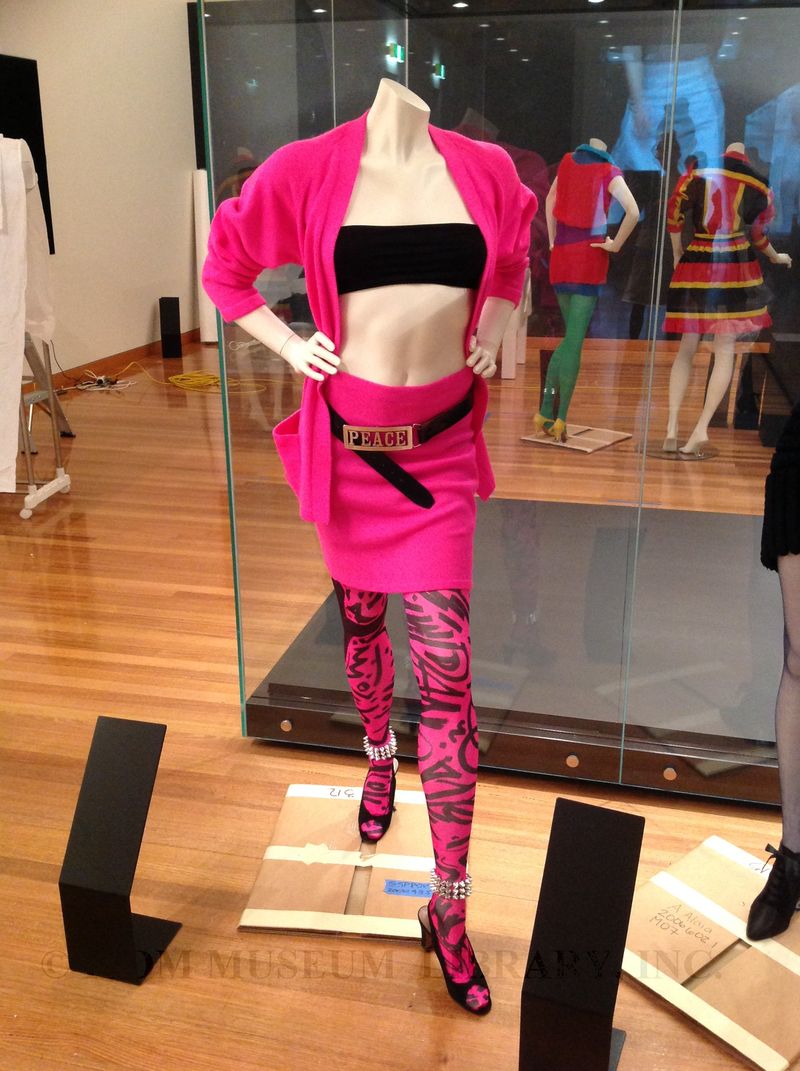 The ensemble as it appeared in Modern Love.
The ensemble as it appeared in Modern Love.
I collaborate with Curator Kevin Jones, and the rest of our museum staff, everyday. Sometimes I feel a bit out of my league when working with more contemporary garments (I specialize in the nineteenth century), so it’s especially helpful to ask for others’ help. We needed to acquire a pair of shoes for the ensemble. Accessories shown on runways are not always made for resale, especially early in designers’ careers. The shoes worn with this ensemble were a pair of black low-heeled pumps, studded with spikes. Even if we did have the rare original shoes, we wouldn’t utilize them for this mannequin. The weight of the body is too heavy to place on a museum object, and we needed to secure the mannequin's feet on floor spikes for the exhibition (we cut a hole through the sole of the shoe for the floor spike to reach the foot hole). Working from the period images I gave them, my co-workers found these c.1980 shoes and picked up some studded bracelets in the Los Angeles garment district. We slipped them up over the mannequin’s ankle, creating prop copies of the originals to impart the punk vibe Sprouse and his models were known for.
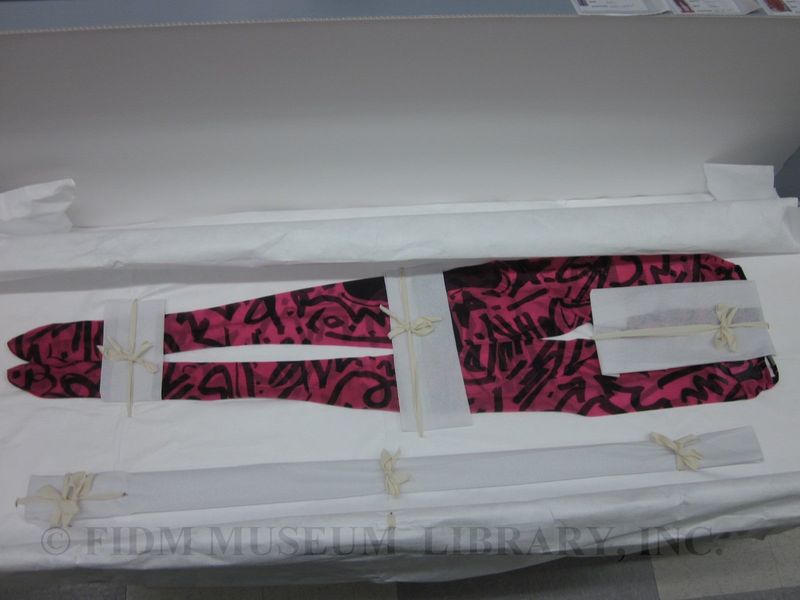
The tights were carefully packed for shipping to Australia.
We were able to drill holes in the prop shoes because they are not accessioned museum objects. However, there was still the problem of the tights, which would cover the hole in the mannequin’s foot. After consulting with our conservation team, we decided to carefully open up a one inch portion of seam at the foot where the spike could be inserted (the stockings are seamed up the center back from thigh to toe). The tights impart so much energy to the look, we just couldn’t lose them. Both the original stitching and unstitching were carefully documented, and the tights will be returned to their original state once the garments come back to the FIDM Museum.
I’ll end with a photo of the installation team at the Bendigo Art Gallery, striking poses with the styled Sprouse mannequin!
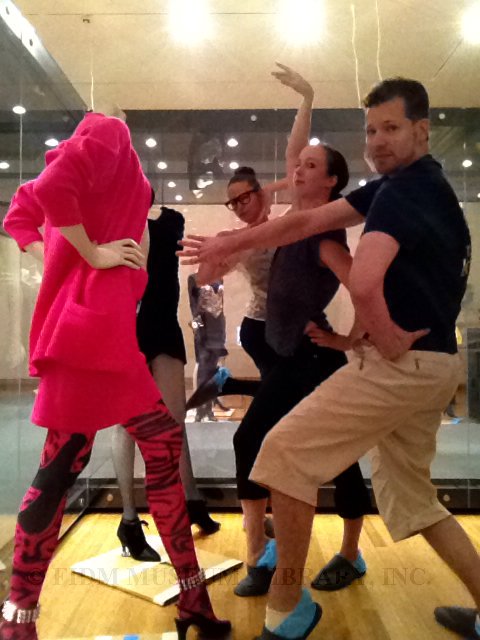
L to R: Dani, Christina, and Kevin in a show-down with the mannequins.